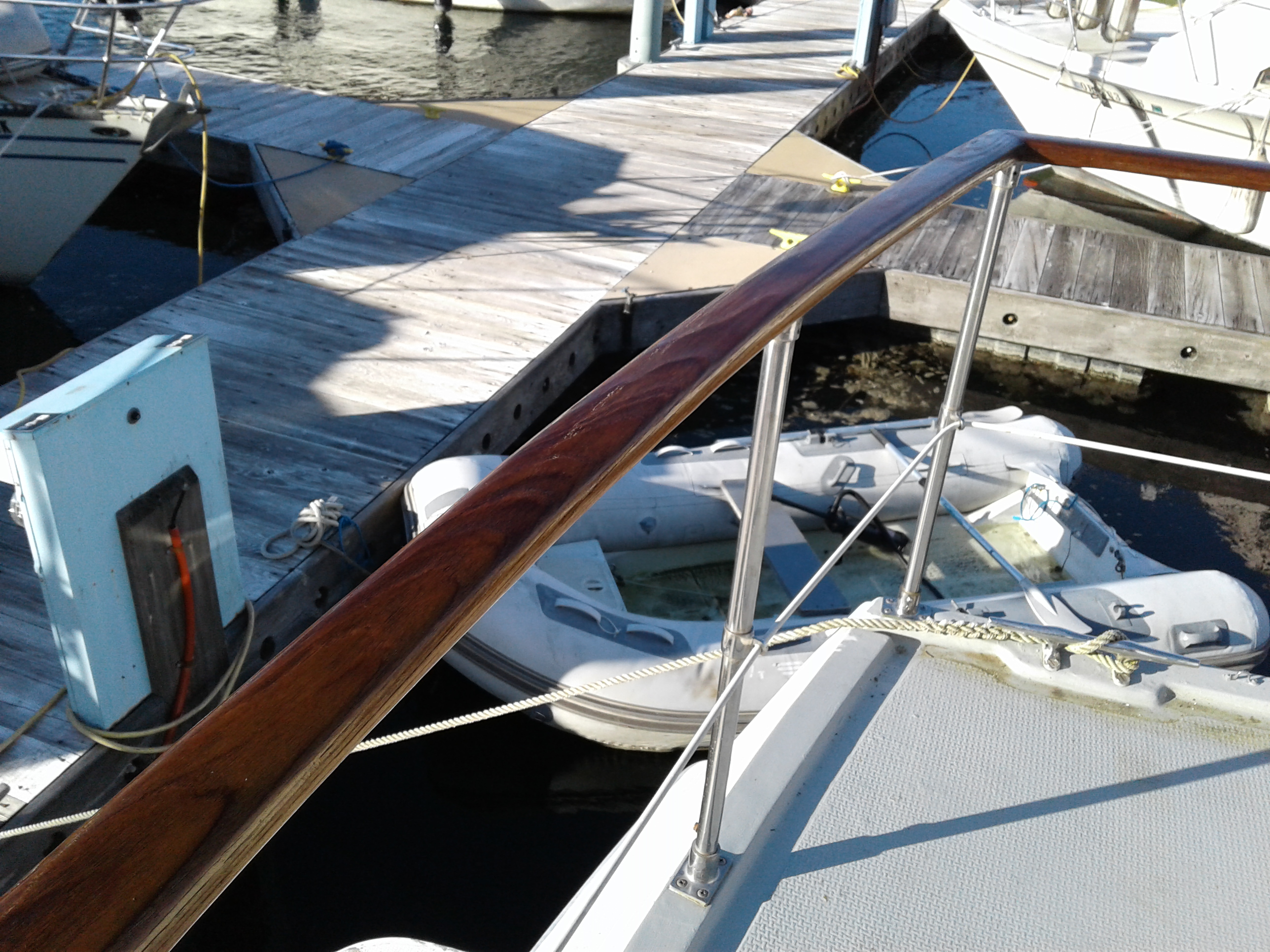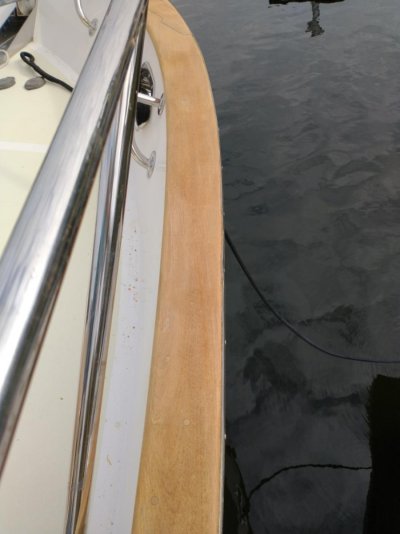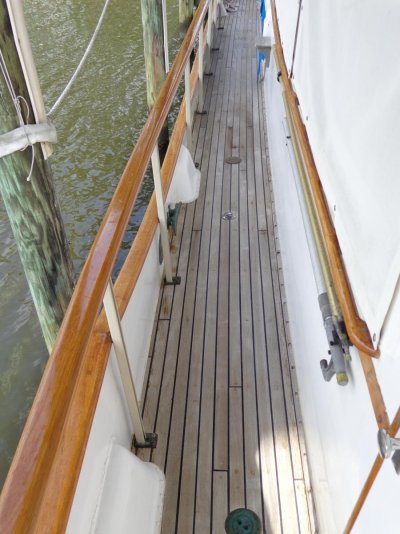After preparing your trim, use a high quality varnish, begin by diluting it with the product's associated reducer 50-50% for the first coat, then 75-25%, and then 95-5%, to soak down into and seal the wood for multiple layers, and then continue finishing with three to six additional 100% varnish coats. Of course this should be applied 4 to 6 hours between coats (to adhere to the previous) or light scratch before each coat, and yes never apply varnish when any dampness is possible. Of course I take the easy way out, lightly scratch sanding and then apply 2 to 3 more coats quarterly, or at least 3 times a year. For places that have been scratched or worn start over with the diluted process, in those areas. So, every time we stay over somewhere for a month, I work the brightwork into the nicest days, working on about 25 to 40% of the overall wood surface each time, continuously moving around the boat so that every year it all looks really good. Unfortunately, we left our boat for a year and I too now have spots that I need to really work on again, when the weather permits. It's not work, it is relaxation and pleasure in accomplishing the beautiful look that you desire.



